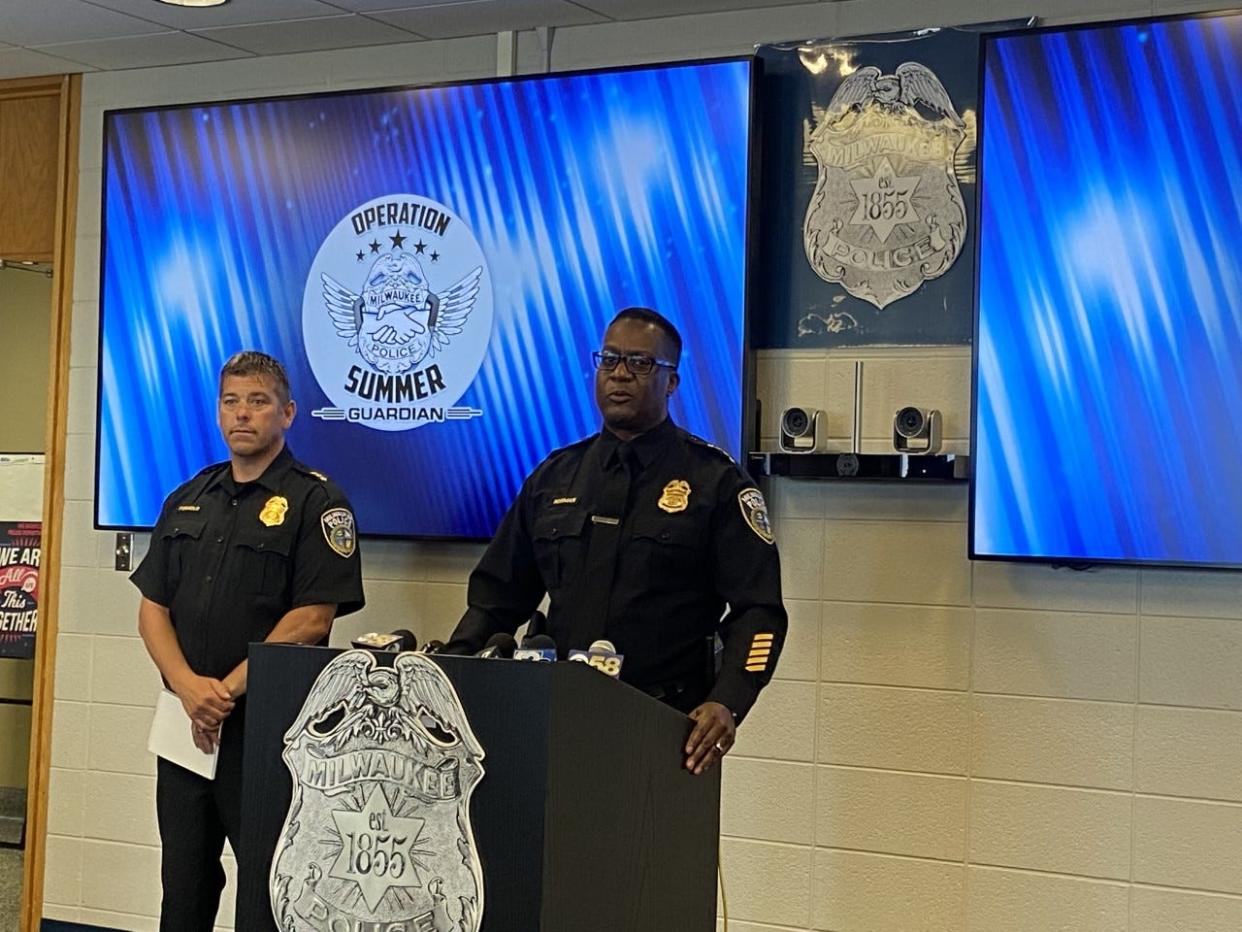New Shotspotter initiative will lead to increased police presence in 8 Milwaukee neighborhoods

Milwaukee police announced Friday they will begin deploying special units dedicated to respond to Shotspotter alerts in targeted neighborhoods through the end of summer.
The new program, called Operation Summer Guardian, is the Police Department’s latest initiative aimed at curbing the city’s historic rate of violent crime, much of it driven by firearms.
Shotspotter is a technology the department has used for years to alert officers of shootings and their location by using a citywide system of global positioning-enabled sensors to detect outdoor gunfire. The objective of the new program is to narrow the response times by police for those alerts.
“Typically the responses to these activations are delayed by our patrol officers because they’re on other calls for service, so hopefully by having a dedicated group of people to do this rapid response, we’ll have more success intercepting those people who are responsible for pulling triggers in our residential areas,” Assistant Chief Paul Formolo said at a news conference Friday.
Shotspotter activations in Milwaukee nearly doubled from 2019 to 2020, and then increased another 28% in 2021, totaling more than 17,000 alerts, according to Milwaukee police.
Jeffrey Norman said the program will mean an increased police presence in eight neighborhoods with a disproportionate amount of Shotspotter alerts: Muskego Way, Uptown, Metcalfe Park, Franklin Heights, Old North Milwaukee, Sherman Park, St. Joseph’s and Washington Park.
Together, those areas account for 12% of all gunfire activations in the city and 10% of all firearm related homicides, according to police.
The special units will have the ability to shift away from those neighborhoods if other parts of the city see a large amount of Shotspotter activity, Norman and Formolo said, but the focus will be those eight neighborhoods. The program is expected to run into the month of September.
Norman emphasized the special units deployed in those neighborhoods are expected not just to respond to Shotspotter alerts quickly, but to also spend time outside of police vehicles and engage with community members.
He said the department will distribute door hangers to residents alerting them to the increased police presence and a group of community stakeholders has been convened to receive feedback from residents.
“We don’t want to do more harm in our community than what’s already been done, but it’s important for us to be responsive,” Norman said. “It’s important to use the technology… to put it to its best use.
“We expect officers to be roving about being prepared for those responses, but also to engage our community.”
Contact Elliot Hughes at elliot.hughes@jrn.com or 414-704-8958. Follow him on Twitter @elliothughes12.
Stay in the know. Sign up to get NewsWatch delivered to your inbox every afternoon.
Our subscribers make this reporting possible. Please consider supporting local journalism by subscribing to the Journal Sentinel at jsonline.com/deal.
DOWNLOAD THE APP: Get the latest news, sports and more
This article originally appeared on Milwaukee Journal Sentinel: Police to increase presence in 8 Milwaukee neighborhoods

